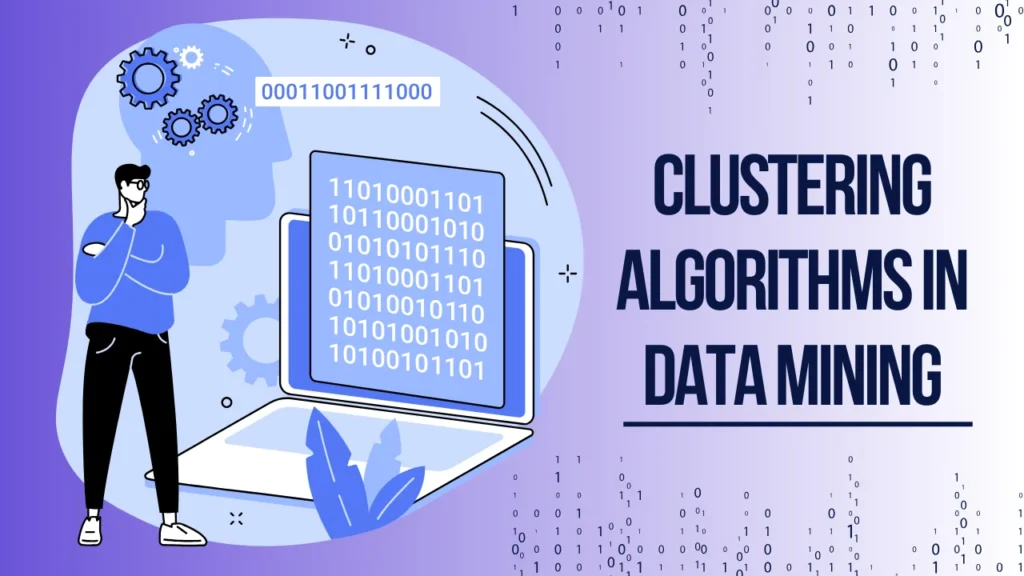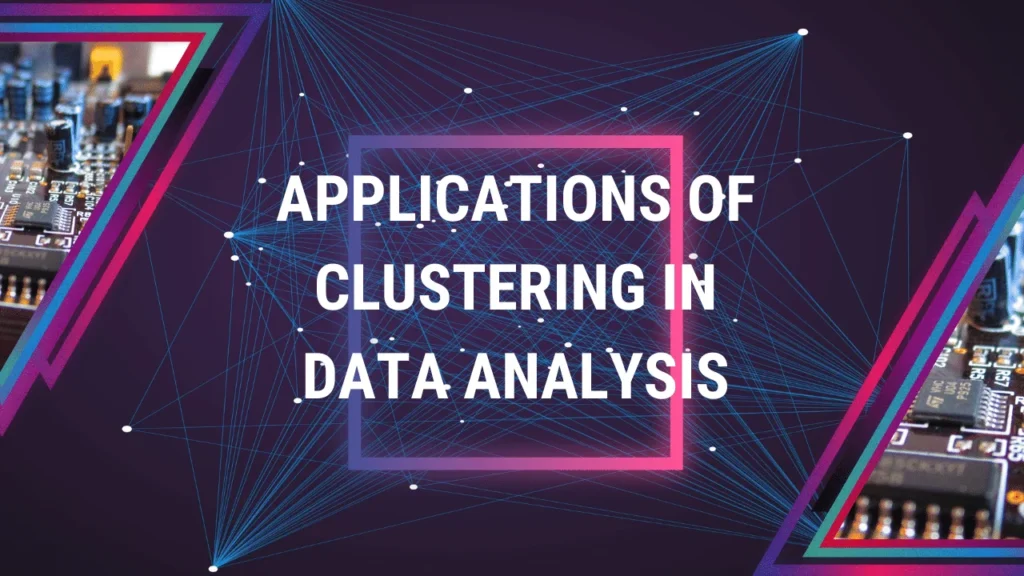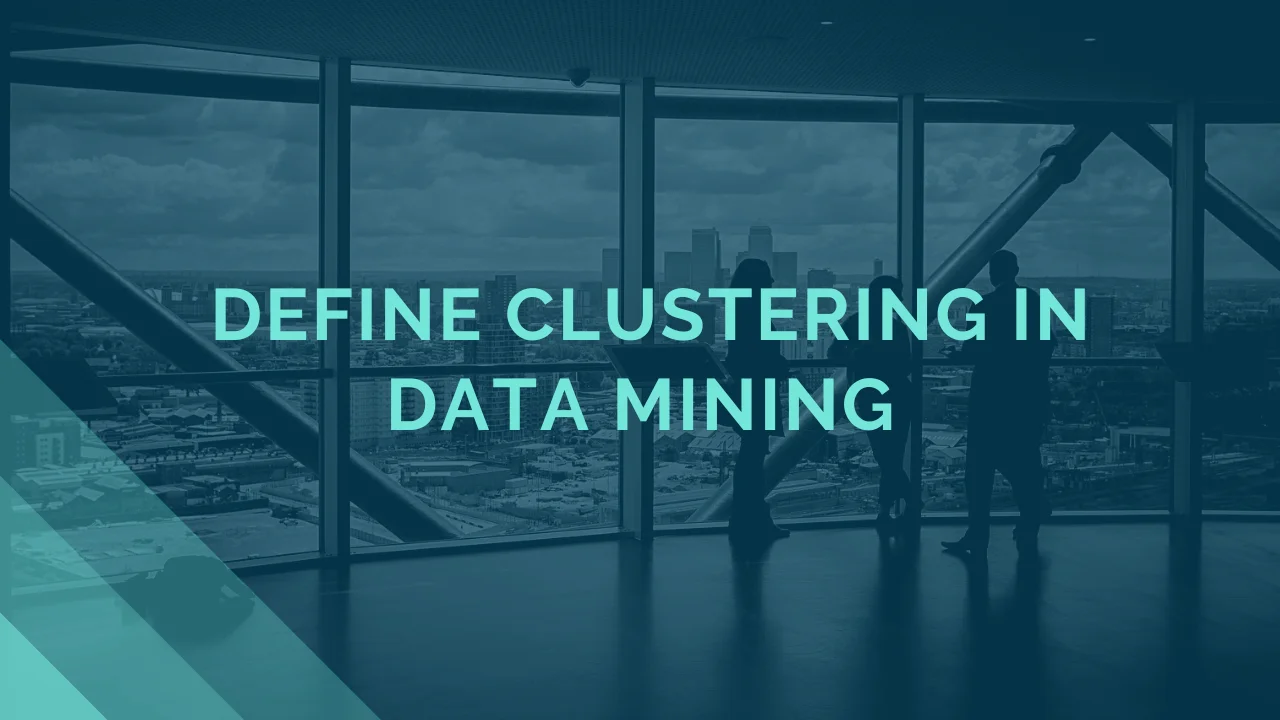Clustering is an essential data mining technique for discovering valuable insights and patterns in large datasets. In this technique, objects are clustered together based on how similar they are to one another rather than how similar they are to objects in other clusters. By comparing objects with similar characteristics, data scientists can uncover the dataset’s underlying structure. This method falls under the umbrella of “unsupervised learning” since it finds its own unique clusters in the data rather than using labels or predetermined classifications. Define Clustering in Data Mining: Clustering involves grouping a set of objects in such a way that objects in the same group (called a cluster) are more similar to each other than to those in other groups or clusters.
Purpose and Scope of Clustering
Grouping data into meaningful sets, where each set stands for a distinct pattern, trait, or behavior, is clustering’s principal objective. This is useful in many fields, including bioinformatics (for example, grouping genes with similar expression patterns) and marketing (for example, consumer segmentation via clustering of comparable consumer behaviors). When looking for suspicious activity, clustering is also very helpful in spotting outliers. Clustering is a must-have for data-driven decision-making and strategic planning because it simplifies the process of viewing, analyzing, and interpreting massive and complicated datasets.
Clustering Algorithms in Data Mining

K-means Clustering Explanation provided
A simple and widely used clustering method is K-means clustering. K separate, non-overlapping subgroups or clusters will be created from the dataset. The first step is to randomly choose K points to serve as the cluster centers, or centroids. The centroids are recalculated after assigning each data point to the nearest centroid. Once the centroids have stabilized, the process repeats until the variance within each cluster is minimized. Although it is most effective with spherical clusters and requires the number of clusters to be specified beforehand, K-means is widely applicable due to its simplicity and efficiency.
Hierarchical Clustering Methods
A fixed number of clusters is not necessary for hierarchical clustering, in contrast to K-means. It uses agglomerative (combining) or divisive (splitting) methods to construct a cluster hierarchy. While divisive hierarchical clustering begins with all points in one cluster and splits the most dissimilar cluster at each step, agglomerative hierarchical clustering starts with each data point as a single cluster and merges the closest pair of clusters at each step. The end product is a dendrogram, a tree-like structure that summarizes the clustering process visually and lets you choose the clustering level by slicing the dendrogram at a desired level of similarity.
DBSCAN Clustering Algorithm
A robust clustering method, DBSCAN (Density-Based Spatial Clustering of Applications with Noise) can discover clusters of any shape using density as their basis. The method finds “core points” that have a large number of nearby neighbors and uses them to build larger clusters. Any point that cannot be reached from any core point is considered noise. Because it does not need the number of clusters to be specified, DBSCAN is especially helpful for datasets with noise and non-spherical cluster shapes.
Evaluating Cluster Quality and Performance Metrics
When it comes to clustering algorithms, the quality of the clusters is king. For measuring cluster compactness and separation, various metrics are employed, including the silhouette coefficient, Davies-Bouldin index, and Calinski-Harabasz index. You can use these metrics to see how effectively the data points are clustered and if the clusters make sense when you look at the data and the problem.
Cluster Optimization in Data Mining
In order to get more relevant and accurate results from clustering, it is necessary to optimize the clustering process. To achieve this goal, it is necessary to employ strategies such as feature scaling to guarantee that each feature contributes an equal amount to the similarity measure, choose suitable distance metrics (such as Manhattan or Euclidean), and choose the optimal number of clusters. Combining numerous clustering results into a consensus solution using advanced methods such as cluster ensemble techniques can produce more stable and robust results than individual clustering outputs.
Applications of Clustering in Data Analysis

Customer Segmentation in Marketing
Clustering is a useful tool for marketers in their pursuit of consumer segmentation according to demographics, preferences, and buying habits, among other characteristics. Businesses can improve customer engagement and resource allocation by targeting specific groups with tailored marketing strategies, made possible by this segmentation. As an example, clustering can be used to find groups of people with similar interests for targeted advertising or to identify valuable customers who are more likely to respond to premium offers.
Anomaly Detection in Cybersecurity
In cybersecurity, clustering is crucial for spotting suspicious patterns that might be signs of danger. We can identify suspicious activity, such as fraud or intrusion, by grouping typical actions and comparing them to the current state of affairs. Data systems can be kept secure and intact with this proactive approach.
Gene Expression in Bioinformatics
Bioinformatics makes use of clustering to classify genes according to their expression patterns in different environments. This has the potential to uncover sets of genes or pathways that are involved in particular biological processes, which can help us understand diseases and find ways to treat them.
Image Segmentation in Computer Vision
When it comes to computer vision, clustering is essential for dividing images into useful regions. Isolating regions of interest in medical imaging, detecting objects and obstacles in autonomous vehicles, and evaluating crop health in agricultural technology are all possible applications of this technology.
Strategic Planning with Clustering Insights
Clustering is a useful tool for guiding strategic planning because it reveals hidden trends and patterns in the data. Financial analysts can use clustering to group stocks with similar price movements for portfolio optimization, while urban planners can use it to find areas with similar land use for infrastructure development.
Challenges in Clustering High-Dimensional Data
Curse of Dimensionality
The curse of dimensionality states that as the amount of features (dimensions) in a dataset increases, the computational burden and complexity also rise. Distance between points loses some of its significance in high-dimensional spaces, and conventional measures of distance, such as the Euclidean distance, may fail to adequately represent the genuine similarity. Since the algorithm has a harder time seeing the patterns in the data, clustering becomes more difficult.
Feature Selection and Dimensionality Reduction
Methods for feature selection and dimensionality reduction are crucial in combating the curse of dimensionality. While dimensionality reduction techniques like t-Distributed Stochastic Neighbor Embedding (t-SNE) or Principal Component Analysis (PCA) convert the data into a lower-dimensional space, feature selection involves selecting the most relevant features that aid in clustering. By eliminating extraneous information and zeroing in on what’s really useful, these techniques boost the performance of clustering algorithms.
Handling Sparse Data
Sparsity is a common problem in high-dimensional datasets caused by the abundance of features with zero or nearly zero values. Because the lack of information in some dimensions might be misinterpreted, sparse data can distort the clustering process. To address these issues and achieve more meaningful clusters, techniques such as Sparse PCA or clustering methods developed for sparse data can be utilized.
Future Trends in Clustering Algorithms and Data Mining Technology
New Developments in AI and ML
More and more, clustering is being used in conjunction with other AI and machine learning methods. For instance, in complex datasets such as images or text, using deep learning for feature extraction prior to clustering can result in more complex and nuanced groupings. The clustering process can also be optimized dynamically based on feedback using reinforcement learning.
Scalability and Big Data Clustering
Scalability is becoming more important as datasets keep getting bigger. Clustering algorithms are now able to efficiently manage enormous datasets with the help of distributed computing frameworks and parallel processing techniques. In order to process data across numerous nodes in a cluster, scalable clustering algorithms can be implemented with the help of tools such as Apache Spark and Hadoop.
Ethical Considerations and Bias Mitigation
Concerns about bias mitigation and ethical implications are growing in importance due to the widespread use of clustering in many fields. It is important to design and test clustering algorithms thoroughly to avoid discriminatory outcomes or bias reinforcement. Efforts are being made to develop auditing and adjustment techniques for clusters that better represent equity and fairness.
Frequently Asked Questions
What is the main advantage of using clustering in data mining?
Clustering helps uncover natural groupings in data without predefined labels, revealing intrinsic patterns and aiding in insightful decision-making.
How does the K-means clustering algorithm determine the number of clusters?
K-means requires the number of clusters to be specified beforehand, often determined using methods like the elbow method or silhouette analysis.
Why is DBSCAN particularly effective for clustering noisy data?
DBSCAN can identify clusters of arbitrary shape and ignore noise by focusing on dense regions of data points, making it robust against outliers.
Can clustering be used for both supervised and unsupervised learning?
Clustering is primarily an unsupervised learning technique, but its results can inform or enhance supervised learning models by providing group insights.
What role does feature selection play in clustering high-dimensional data?
Feature selection reduces the dimensionality by choosing relevant features, improving clustering performance and mitigating the curse of dimensionality.
Also Check: Central Mining Research Institute: Fuel Research
Conclusion
When it comes to data mining, clustering is a potent and flexible tool for discovering data’s latent structure and improving decision-making in a wide range of domains. Define Clustering in Data Mining: It involves the process of grouping similar data points together based on certain criteria, enabling the identification of meaningful patterns and relationships within the data. It has far-reaching and significant potential uses, from improving the marketing experience for customers to facilitating breakthroughs in bioinformatics research. The importance of clustering in obtaining useful insights will only increase as data becomes larger and more complicated.

Brandy Stewart, an enchanting wordsmith and seasoned blogger, weaves compelling narratives that transport readers to uncharted territories. Infused with perceptive viewpoints and dynamic storytelling, Doris exhibits a command of language that enthralls both hearts and minds, leaving a lasting mark on the literary panorama.

